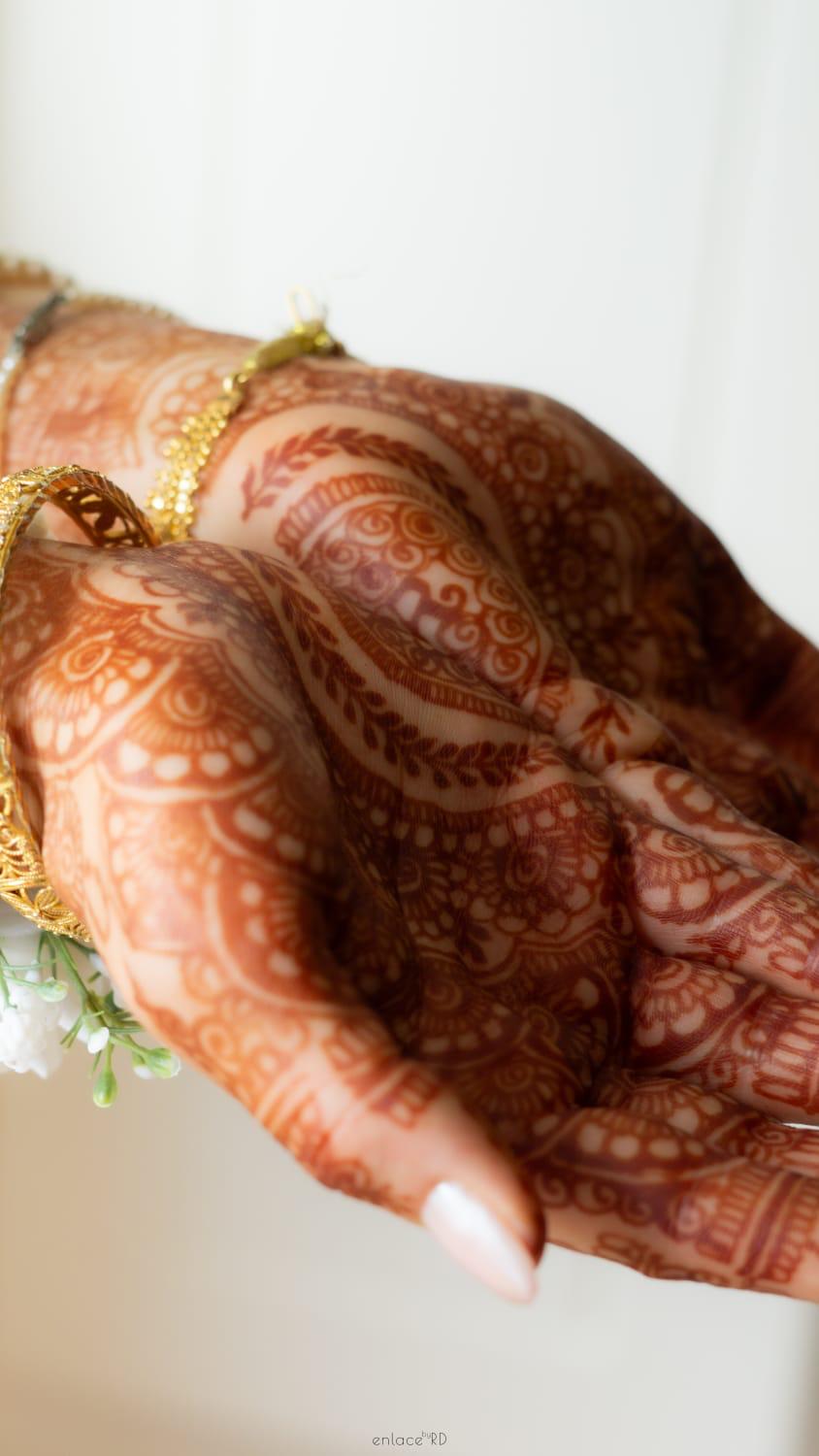Basic Henna Course
This course is meant to new started with no knowledge on Henna Design. It’s gives very insight knowledge and support how to design basic elements of Henna and its composition to make better use of skill and take for next level.
Introduction to Henna
- History and cultural significance
- Different types of henna (natural, black, red)
- Overview of modern henna applications
2. Henna Preparation
- Selecting and sourcing quality henna powder
- Mixing henna paste: ingredients, ratios, and consistency
- Storing henna paste: best practices for freshness
3. Tools and Materials
- Types of applicators: cones, bottles, and brushes
- Additional materials: stencils, transfer paper, and adhesives
- Safety and hygiene: gloves, skin preparation, and aftercare products
4. Basic Design Elements
- Lines and strokes: thin, thick, straight, and curved
- Basic shapes: dots, circles, triangles, and squares
- Patterns and motifs: vines, leaves, flowers, and paisleys
5. Design Techniques
- Creating symmetry and balance
- Layering and shading techniques
- Negative space and how to use it effectively
6. Practicing on Paper
- Tracing basic patterns
- Freehand drawing
- Developing a steady hand and consistent pressure
7. Applying Henna on Skin
- Preparing the skin: cleansing and exfoliating
- Transferring designs: freehand vs. using stencils
- Step-by-step application: from simple to complex designs
Course Fee – £120
Duration – 4 Weeks ( One session Per week )

Advance Henna Course
This course is meant to advance users who has knowledge on Henna Design. It’s gives very full knowledge how to design advance elements of Henna and its composition to make better use of skill and better employment prospects
Introduction to Henna
- History and cultural significance
- Different types of henna (natural, black, red)
- Overview of modern henna applications
2. Henna Preparation
- Selecting and sourcing quality henna powder
- Mixing henna paste: ingredients, ratios, and consistency
- Storing henna paste: best practices for freshness
3. Tools and Materials
- Types of applicators: cones, bottles, and brushes
- Additional materials: stencils, transfer paper, and adhesives
- Safety and hygiene: gloves, skin preparation, and aftercare products
4. Advanced Design Concepts
Course Fee – £250
Duration – 4 Weeks ( One session Per week )

